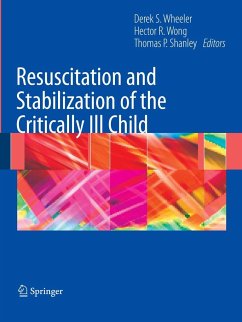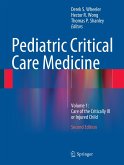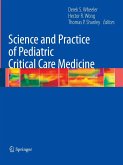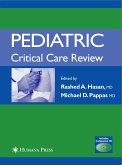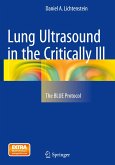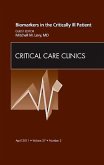The care of the critically ill or injured child begins with timely, prompt, and aggressive res- citation and stabilization. Ideally, stabilization should occur before the onset of organ failure in order to achieve the best possible outcomes. In the following pages, an international panel of experts provides an in-depth discussion of the early recognition, resuscitation, and stabilization of the critically ill or injured child. Once again, we would like to dedicate this textbook to our families and to the physicians and nurses who provide steadfast care every day in pediatric intensive care units across the globe. Derek S. Wheeler Hector R. Wong Thomas P. Shanley V Preface to Pediatric Critical Care Medicine: Basic Science and Clinical Evidence The ? eld of critical care medicine is growing at a tremendous pace, and tremendous advances in the understanding of critical illness have been realized in the last decade. My family has directly bene? ted from some of the technological andscienti? c advances made in the care of critically ill children. My son Ryan was born during my third year of medical school. By some peculiar happenstance, I was nearing completion of a 4-week rotation in the newborn intensive care unit (NICU). The head of the pediatrics clerkship was kind enough to let me have a few days off around the time of the delivery-my wife, Cathy, was 2 weeks past her due date and had been scheduled for elective induction.
From the reviews:
"This softcover book contains 12 chapters from an earlier comprehensive work ... by the same authors (Springer, 2007). ... Fellows and practitioners treating critically ill children are an appropriate audience for this work ... . Chapters are well written and illustrated with high quality ... . Each chapter contains extensive references dating to within three years of the date of publication." (David J. Dries, Doody's Review Service, March, 2009)
"This condensed text offers the key information necessary to understand and provide the effort needed to assess and treat the critically ill child. ... chapters provide excellent preparation for skill development and a pragmatic review for the seasoned practitioner. ... could serve as an excellent reference and teaching tool for physicians at all levels of training or practice. It would be a wonderful overview for pediatric critical care nurses, respiratory therapists, and transport personnel." (James D. Fortenberry, Journal of the American Medical Association, Vol. 304 (21), December, 2010)
"This softcover book contains 12 chapters from an earlier comprehensive work ... by the same authors (Springer, 2007). ... Fellows and practitioners treating critically ill children are an appropriate audience for this work ... . Chapters are well written and illustrated with high quality ... . Each chapter contains extensive references dating to within three years of the date of publication." (David J. Dries, Doody's Review Service, March, 2009)
"This condensed text offers the key information necessary to understand and provide the effort needed to assess and treat the critically ill child. ... chapters provide excellent preparation for skill development and a pragmatic review for the seasoned practitioner. ... could serve as an excellent reference and teaching tool for physicians at all levels of training or practice. It would be a wonderful overview for pediatric critical care nurses, respiratory therapists, and transport personnel." (James D. Fortenberry, Journal of the American Medical Association, Vol. 304 (21), December, 2010)

